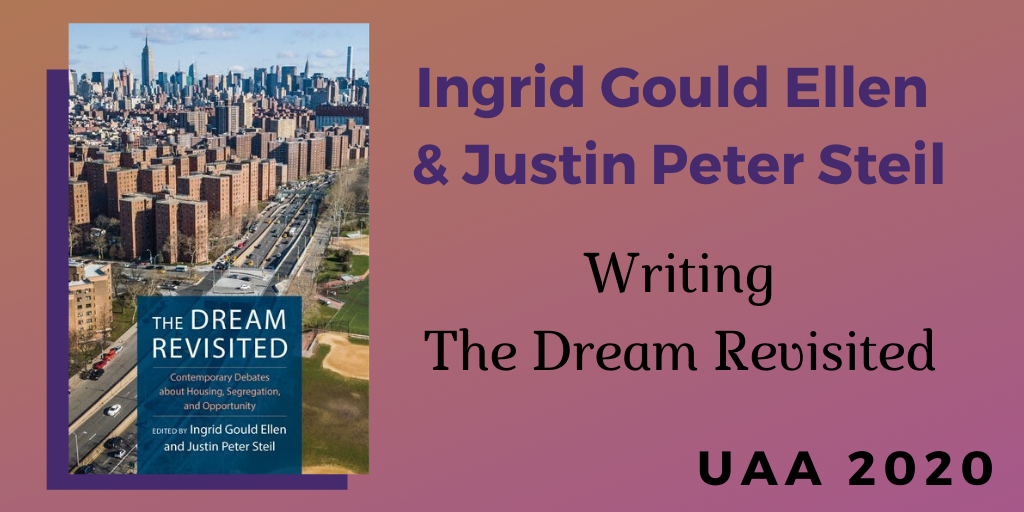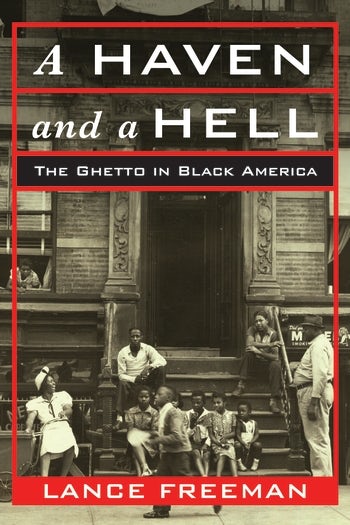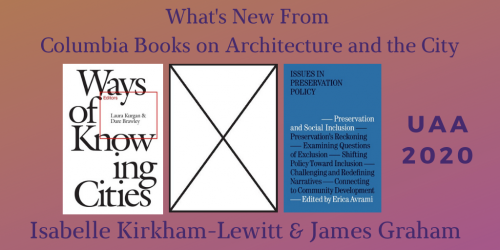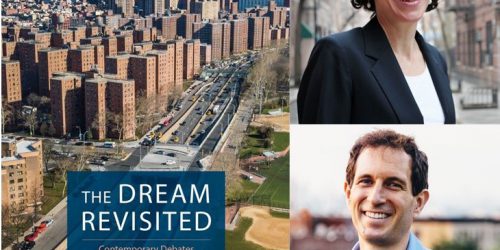Ingrid Gould Ellen and Justin Peter Steil on Writing The Dream Revisited

“The deep engagement and spirited debate found in The Dream Revisited make it a must-read for political leaders, housing advocates, and researchers seeking to understand the causes and consequences of segregation in America.”
~Matthew Desmond, author of Evicted: Poverty and Profit in the American City
Ingrid Gould Ellen and Justin Peter Steil, editors of The Dream Revisited, join us for the second day of our UAA virtual exhibit! The book takes an unusual approach to the causes and consequences of segregation in cities in the United States: Ellen and Steil bring together a range of voices and viewpoints to discuss (and often debate) the nation’s separate and unequal living patterns, and to offer policy solutions that can help solve or at least mitigate the problems created by segregation. Learn how this project began and explore the range of debates in their post below.
• • • • • •
The Dream Revisited started as an NYU Furman Center blog that we launched on MLK Day in 2014. Our motivation was to spur candid and constructive discussion about housing, segregation, and opportunity. The governing ideology in this country is that all children, regardless of where they start on the economic ladder or where they grow up, should have access to a rich set of opportunities. But the reality falls far short of this ideal, increasingly so. Further, we thought we were seeing a widening ideological divide in discussions about the nature of these neighborhood disparities and how to address them. The debates either seemed tired or too high level to be useful for policy.
So our aim was to bring a diverse set of voices together—both scholars and practitioners—to engage in a fresh set of debates. In each case we invited someone to write an initial essay on a topic, and then we asked three other people to write responses. The debates range from high-level questions, like how much we should care about racial integration, to specific policy debates, like how to help families with housing-choice vouchers reach a broader set of neighborhoods, how to encourage more affordable-housing development in resource-rich areas, and whether to grant local residents a special preference when they apply for homes in newly built affordable housing developments.
“As the gap between the poor and the rich has grown, their ability to pay for housing has widened as well, leading neighborhoods to become more stratified at both ends of the income distribution.”
The blog posts are compiled and edited for the book, organized thematically, and preceded by a new set of introductory essays that we wrote to highlight key themes. The book finds several broad areas of consensus. Both poor and wealthy households are living in more economically homogenous communities than twenty or thirty years ago. There is also consensus that rising income segregation is driven in part by the growth in income and wealth inequality that has occurred over the last few decades. As the gap between the poor and the rich has grown, their ability to pay for housing has widened as well, leading neighborhoods to become more stratified at both ends of the income distribution. A growing chorus also points to the significance of local land-use regulations in exacerbating rising income segregation. As for consequences, we have mounting evidence that neighborhood environments shape the life chances of children. Poor children who grow up in high-poverty neighborhoods fare less well educationally and economically than poor children who grow up in more economically integrated neighborhoods.
The discussions also point to areas of continuing debate. For example, there is considerable disagreement about the nature of the residential preferences of white households and to what extent those preferences are driven explicitly by a neighborhood’s racial composition. There is also disagreement about the extent to which gentrification may contribute to racial and economic integration and how lasting any such integration would be.
“We need more experimentation and research to understand the types of policy reforms that can break down barriers and afford households a broader array of residential choices.”
Perhaps the greatest disagreement surfaces when we consider policy responses. Most fundamentally, some of the contributors question whether governments should actively intervene in the market to encourage integration rather than simply policing antidiscrimination laws. But even those who agree that there are grounds for government intervention disagree about appropriate goals—should the aim be to equalize public resources across neighborhoods or to integrate those neighborhoods? Further, there is disagreement about the best means to achieve either of those ends.
Some of these disagreements are rooted in normative judgments, and others concern facts and thus lay out an important agenda for future research. We need more experimentation and research to understand the types of policy reforms that can break down barriers and afford households a broader array of residential choices.
We designed the book for teaching and believe the debate format can be especially helpful in encouraging conversation about issues students often find difficult to discuss. Reading a diverse set of views about a topic will help students feel more comfortable engaging in dialogue and debate. We hope students and readers will not only learn about substantive issues but also come to appreciate that discussions among people who disagree can be both civil and constructive. A core premise of the book is that we can learn from listening and talking to people with whom we disagree.








